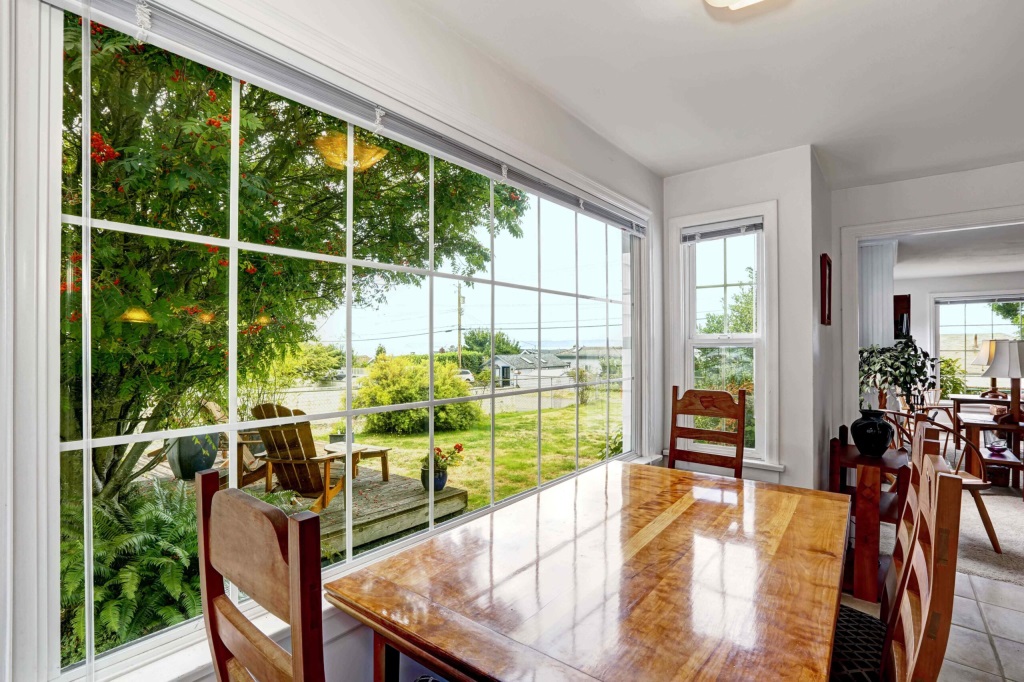Windows are not just functional elements of a building; they are architectural features that play a significant role in the aesthetics and functionality of a space. Different window styles have evolved over the centuries, reflecting both the architectural trends of their time and the practical needs of homeowners.
In this blog post, we’ll delve into the fascinating world of window styles, exploring their history, characteristics, and the unique perspectives they offer.
1. Double-Hung Windows
One of the most iconic window styles, double-hung windows has been around for centuries. They consist of two sashes, one above the other, that slide vertically within the frame.
This classic design allows for flexible ventilation, with the top sash being lowered to let warm air escape and the bottom sash raised to let fresh air in. Double-hung windows are timeless and can be found in various architectural styles, making them a versatile choice for both traditional and contemporary homes.
2. Casement Windows
Casement windows are hinged at the side and operated with a crank. They swing open outward, allowing for excellent ventilation and unobstructed views. These windows are often used in more modern or European-style homes, where their sleek design and ease of use are appreciated. Casement windows come in various sizes and shapes, adding an element of architectural interest to the facade.
3. Bay Windows
Bay windows add a classic touch to any home. They’re designed with three sections, the middle one larger than the side parts, giving them an elegant look linked to Victorian and Edwardian styles. These windows create a cozy spot perfect for relaxing or reading, often featuring a seat or storage nook.
Their outward-protruding frames, sometimes made by aluminum extrusion companies, offer a modern feel. Bay windows remain a popular choice in modern homes due to their charm and practicality.
4. Awning Windows
Similar to casement windows, awning windows are hinged, but they open from the top and swing outward. This design allows for ventilation even during light rain, as the window acts as an awning, hence the name. Awning windows are common in kitchens and bathrooms, where privacy and moisture resistance are important. Their compact size and functionality make them an excellent choice for modern homes.
5. Picture Windows
If you’re looking to frame a breathtaking view or flood a room with natural light, picture windows are the answer. These large, fixed windows do not open but are designed to provide expansive views and ample illumination. Picture windows are often used in living rooms and other spaces where the focus is on the scenery outside. Their clean, unobstructed look creates a seamless connection between the indoors and the outdoors.
6. Slider Windows
Slider windows are a practical and space-saving option for modern homes. They open horizontally along a track, making them easy to use and maintain. Slider windows are often used in bedrooms, living rooms, and basements. They come in various sizes and are available in single or double sliders, depending on the desired level of ventilation. This style is versatile and complements both traditional and contemporary home designs.
7. Jalousie Windows
Jalousie windows are a unique and often nostalgic choice. They consist of parallel glass, acrylic, or wooden louvers that open simultaneously by pushing all the slats outward. This design allows for precise control over ventilation and airflow. While less common in modern construction, jalousie windows are known for their quirky charm and are still found in some older homes and cottages.
8. Skylight Windows
Skylight windows are a creative way to bring natural light into a space. Installed on the roof, these windows provide a unique perspective by capturing sunlight from above. Skylights are often fixed, but some are operable for ventilation. They can be a striking addition to spaces like attics, lofts, and bathrooms, transforming them into well-lit and airy areas.
9. Garden Windows
Garden windows are like small greenhouses for your home. They protrude from the wall and feature glass on three sides, allowing sunlight to enter from various angles. Typically found in kitchens, these windows create a perfect spot for growing herbs, displaying plants, or simply enjoying the view. Garden windows add a touch of charm and freshness to your interior decor.
10. Clerestory Windows
Clerestory windows are high, narrow windows installed at the top of the walls. They were originally used in Gothic architecture to allow natural light into large cathedrals. Today, they are employed in modern architecture to introduce daylight while maintaining privacy. Clerestory windows are especially popular in contemporary homes and commercial buildings, adding an interesting architectural element to the design.
In Conclusion
Windows are more than mere openings in a wall; they are gateways to different perspectives, both in terms of design and function. The window styles mentioned here are just a glimpse into the diverse world of architectural possibilities. Each style offers a unique vantage point, whether it’s the classic elegance of double-hung windows, the modern functionality of casement windows, or the picturesque allure of bay windows.
When designing or renovating your home, take a moment to consider the various window styles available. The choice you make can significantly impact the ambiance and functionality of your space. So, whether you’re drawn to the timeless appeal of a double-hung window or the innovative design of a clerestory window, remember that windows offer a world of perspectives just waiting to be explored.

